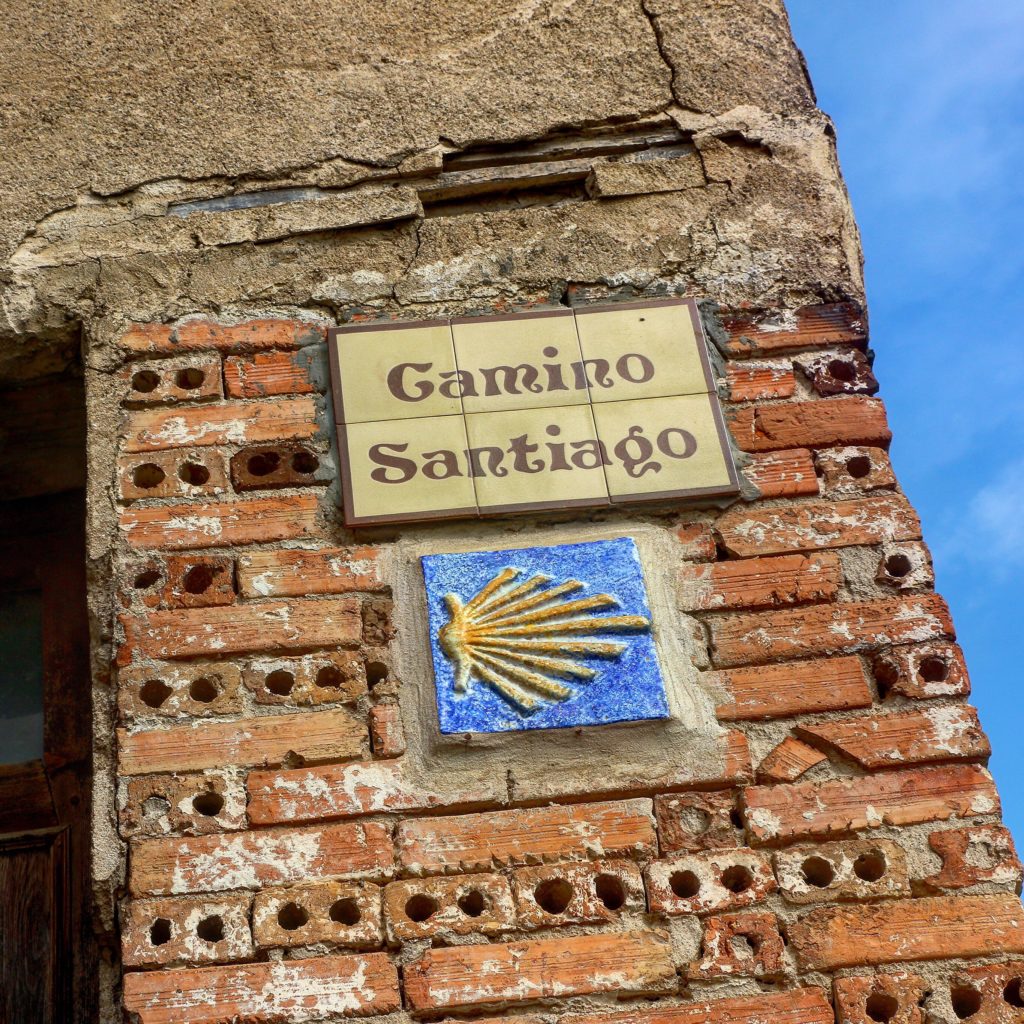Camino de Santiago France Spain
Following Shells on The Camino de Santiago
There are few symbols of the Camino de Santiago that can compete with the scallop shell. Along with yellow arrows the scallop shell has the power to lead pilgrims hundreds of kilometres to Santiago even without a map.
 Shells can be found pained on walls, rocks, trees and pavement and it is one of the most reassuring sights for a pilgrim on their way to Santiago.
Shells can be found pained on walls, rocks, trees and pavement and it is one of the most reassuring sights for a pilgrim on their way to Santiago.
It is also the symbol used to identify the pilgrims along the way, hanging from thousands of backpacks every year.
There are many stories, legends and myths trying to explain the ancient link between the scallop shell and the Camino de Santiago and it is no coincidence that in French the scallop is called Coquille Saint Jacques, while in German scallops are called ‘Jakobsmuscheln’ (James mussels).
Now that I have decided to document my pilgrimage I thought it would be important to include a bit of background information and some of the theories behind the symbol that has come to mean so much to me and many other pilgrims.
I found some wonderful writing on some of the many shell theories at Camino Ways:
The scallop shell is said to be a metaphor, its lines representing the different routes pilgrims
travel from all over the world, all walking trails leading to one point: the tomb of Saint James in Santiago de Compostela. However, it is open to interpretation. Which side points to Santiago? In some regions, the scallop’s longest line is considered the one pointing towards Santiago. This is the case in Asturias, for example if you are walking the Original Way or the Northern Way, and some parts of the Portuguese Way.
But don’t let this fact confuse you, take the scallop shell as a symbol of the Camino, reassuring you you are on the right path! The scallops are most of the time placed next to a yellow arrow so always follow the arrows (no confusion here!), as they are the most accurate ‘road signs’ to follow.
Medieval pilgrims often wore a scallop shell attached to their cloaks or hats during their journey to Santiago. More than being just a symbol or a pilgrim badge, the scallop shells also had a practical purpose: they were a handy and light replacement for a bowl so the pilgrims could use them to hold their food and drink on their long journey. Pilgrims would also be given food at churches and other establishments, and a scallop shell scoop was the measure for the food they would be donated.
Since the scallop is native to the coast of Galicia, the shell also became a memento, a physical proof of having completed the pilgrimage to Santiago (and quite often walked to or via Fisterra, on the Costa da Morte). The shells could be picked up at the very end of the journey in Fisterra but also became a popular souvenir and source of business for the shops near the Cathedral in Santiago and other establishments along the way.
There are many legends trying to source this old association of Saint James with the scallop shell: one of those legends says the apostle once rescued a knight covered in scallop shells, while a similar version of the same story explains that a knight’s horse fell into the water and emerged covered in scallop shells, while the remains of Saint James were being taken from Jerusalem to Galicia.
There are also many stories about the scallop shell believed to have a much earlier origin, dating to pre-Christian times. It is understood the Camino de Santiago had also become a kind of fertility pilgrimage, taken by couples in need of help to have children. This could be related to the fact that the scallop shell might have been a pagan symbol of fertility, originally.
The shape of the scallop shell also resembles the setting sun, which would have been an important daily event, full of symbolism in pre-Christian societies. It is probably not just a mere coincidence that the Saint James Way is a journey to the West, finishing at the ‘end of the world’ (the name given to Fisterra – Finis Terrae) and the setting sun. (Camino Ways)
No matter how it happened the shell now leads the way to Santiago. And about a third of the way through my own Camino I was given my own shell from a Mexican pilgrim as we rested and had a morning coffee. The shell not only symbolises the Camino de Santiago for me but also the kindness I experienced along the way.












